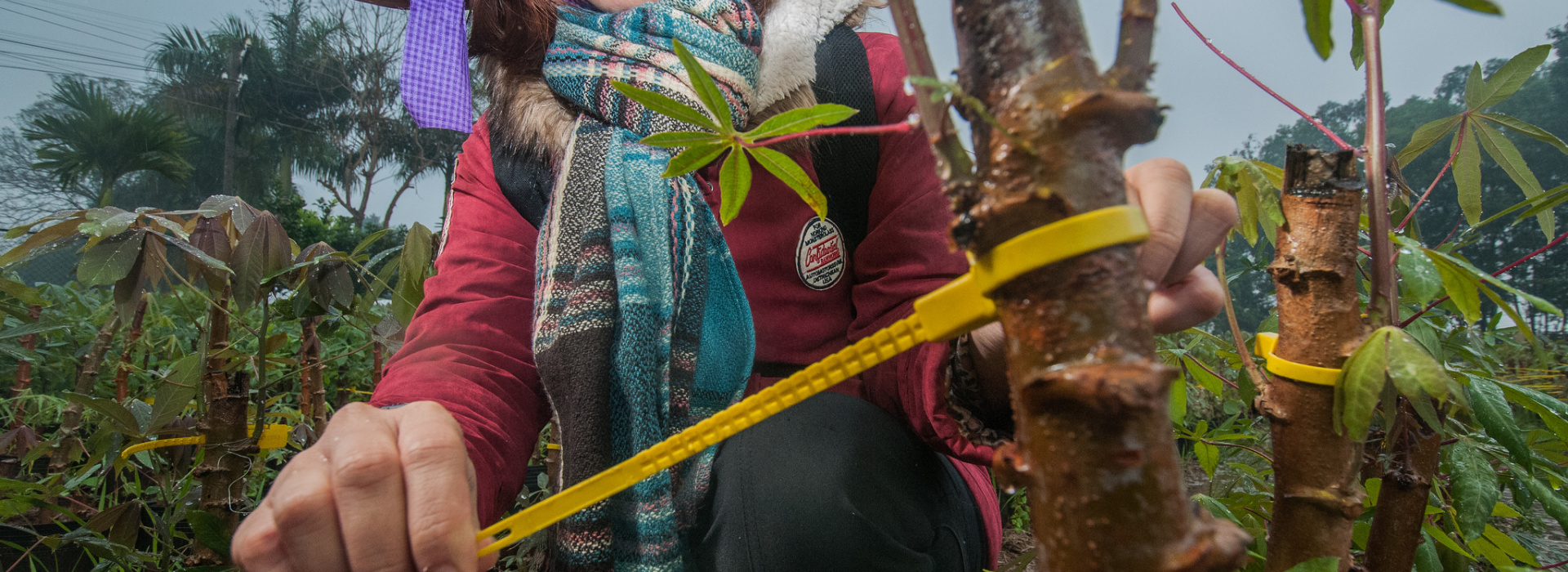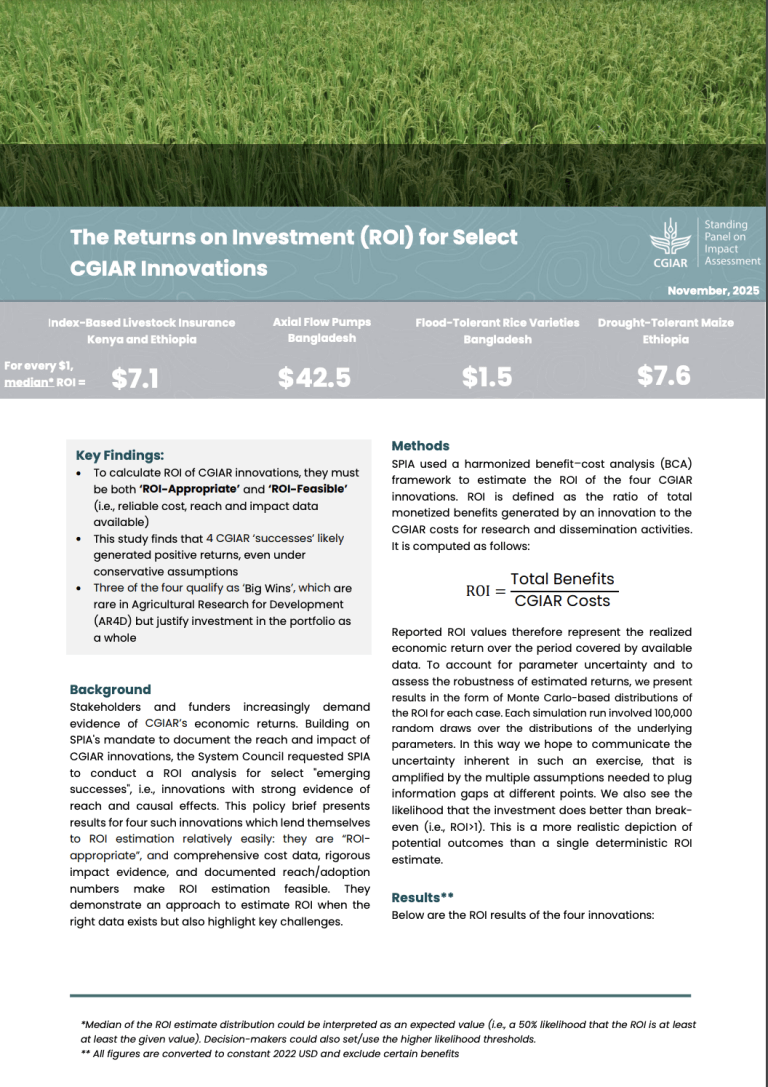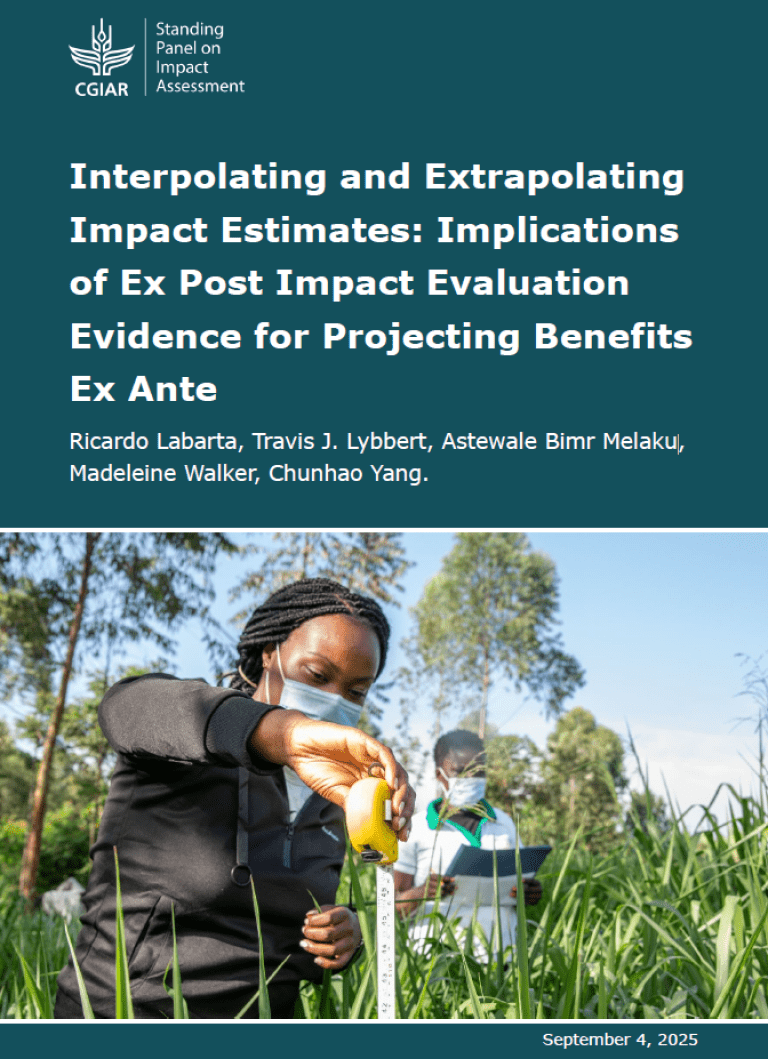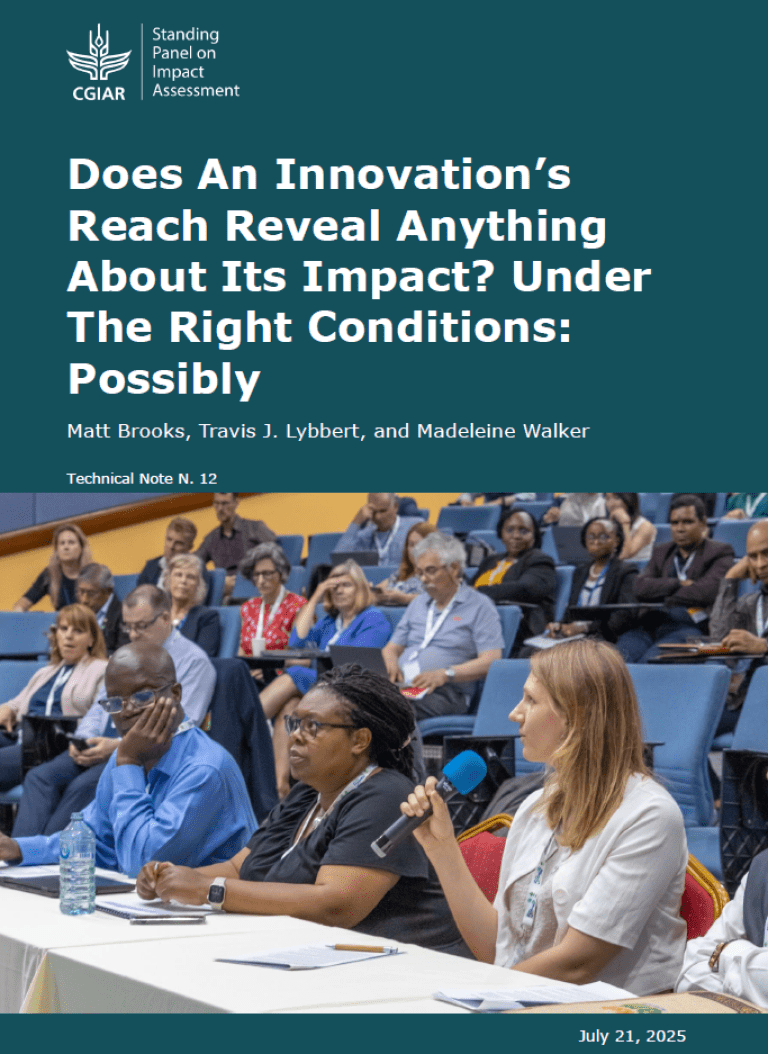This post was co-written by Ricardo Labarta (Senior Scientist & Impact Assessment Research Leader, CIAT), Wilmer Cuellar (Virologist, CIAT) and Luis Augusto Becerra (Cassava Program Leader, CIAT).
The collection of data on the adoption of CGIAR-related crop varieties is a priority for the Standing Panel on Impact Assessment’s (SPIA) agenda and for centers such as the International Center for Tropical Agriculture (CIAT). Projects such as ‘Diffusion and Impacts of Improved Varieties in Africa’ (DIIVA) and ‘Strengthening Impact in the CGIAR (SIAC)’, expanded the number of crops and countries for which adoption estimates were available (read our blog post on the importance of adoption data). SIAC also identified significant shortcomings associated with some of the common methods for identified crop varieties in farmers’ fields, namely expert elicitation and respondent identification in household surveys. There is a growing body of evidence that in many contexts important to CGIAR, the only accurate way to identify varieties is by DNA fingerprinting (DNA FP). Fortunately, the costs of DNA FP have come down dramatically in the past decade, to the point where it is feasible to apply it to large-scale field surveys (read our blog post about scaling up DNA fingerprinting for crop variety identification here.)
Even though the costs have come down, doing varietal identification at scale with DNA FP is still a significant investment. Fortunately, as this example from CIAT’s work on cassava in Vietnam illustrates, these data can be used for many other purposes, greatly enhancing the return on the initial investment.
By 2015, CIAT scientists became aware of the potential presence of the Sri Lankan cassava mosaic virus (SLCMV) that causes Cassava Mosaic disease (CMD), in Southeast Asia. In response to reports of possible presence of this economically-important disease in Thailand and Cambodia, the International Center for Tropical Agriculture (CIAT) created a task force to assess the extent of the problem and implement actions to mitigate its effect in January 2016. Given the origin of the virus, it was hypothesized that the CMD arrived in Southeast Asia through introduction of planting material from South Asia (India or Sri Lanka).
The taskforce, in close collaboration of staff from the Cambodian General Directorate of Agriculture (GDA), showed that the virus was present in different regions of Cambodia and not only in the place where it was first reported (Ratanakiri). Imagining that the problem could be more widespread than initially thought, they took advantage of the existence of a data set that had just been collected in the neighbouring country, Vietnam, as part of a cassava varietal adoption study, supported by SIAC and the CGIAR Research Program of Roots, Tubers and Bananas (RTB). Researchers collected over 3,500 cassava samples from over 800 farmers in order to identify varieties being grown across production areas in Vietnam. All planting material was kept at the Root Crop Research Center (RCRC) in Hanoi. Because the study team used DNA FP for varietal identification, and because their collection protocol—collect stems from all plants, grow them out, and then extract DNA from fresh leaves—ensured high quality samples and avoiding the bias of collecting only symptomatic plants, they were able to use the samples to test for SLCMV in different production areas of Vietnam, especially in Tay Ninh province which borders with Cambodia. In spite of the lack of reported symptoms of CMD, the results of the analysis confirmed that SLCMV was already present in Vietnam. Furthermore, the DNA fingerprinting showed that the infected varieties were bred in Thailand and in Vietnam and a prior CIAT study under SIAC documented that these varieties where not used in other regions of Asia. Importantly, the results of the DNA analysis did not support the hypothesis that the SLCMV was introduced through the direct importation of cassava varieties from South Asia.
The CIAT task force communicated the results to the Vietnamese plant protection authorities which enabled Vietnam to officially recognize the presence of CMD in the country in 2017, the same year it was officially recognized in Cambodia. Next, they reported the results to the scientific community (Uke et al., 2018). As CMD threatens the whole region, stakeholders in Southeast Asia are joining efforts to respond to the epidemic (https://ciat.cgiar.org/event/cmd-sea/). Today, a total of seven different initiatives are currently underway to combat the spread of CMD, and funds have been mobilized through the Australian Centre of International Agricultural Research (ACIAR), the Food and Agriculture Organization of the United Nations (FAO), Philippine Department of Agriculture, and RTB.
A key factor behind CIAT’s rapid response in Vietnam was the close communication between the impact assessment, genetics, virology, and plant protection teams, both in Vietnam and in HQ. Collaboration on the adoption survey ensured that the right people were aware of the survey and recognized the value of the materials collected to respond to the emerging outbreak.
As CGIAR moves forward in establishing protocols for large-scale DNA FP, this case has important lessons for ensuring that the system can capture the full value of its investment in data collection.
For further information, please contact Ricardo Labarta: r.labarta@cgiar.org
References:
First report of CMD in Cambodia (Wang et al., 2016): https://apsjournals.apsnet.org/doi/10.1094/PDIS-10-15-1228-PDN
First report of CMD in Vietnam (Uke et al., 2018): https://doi.org/10.1094/PDIS-05-18-0805-PDN
More info related to the disease: https://ciat.cgiar.org/event/cmd-sea/
Labarta, R., T. Wossen & D.P. Le (2017). The adoption of Improved Cassava Varieties in South and Southeast Asia. 9th ASAE International Conference: Transformation in agricultural and food economy in Asia, 11-13 January 2017, Bangkok, Thailand. Proceedings 2017 pp.1445-1454 ref.14



